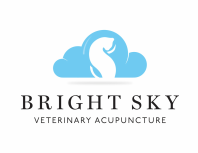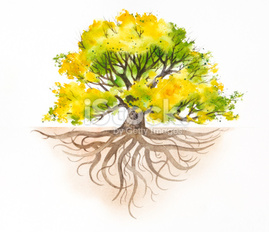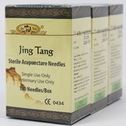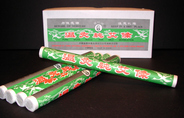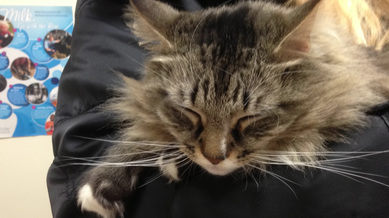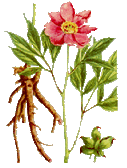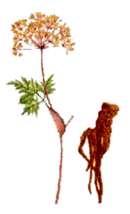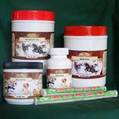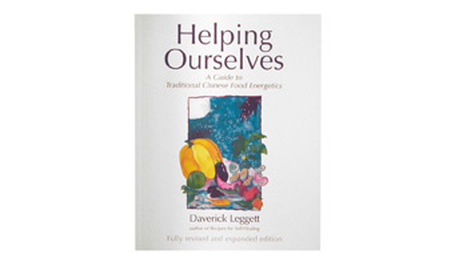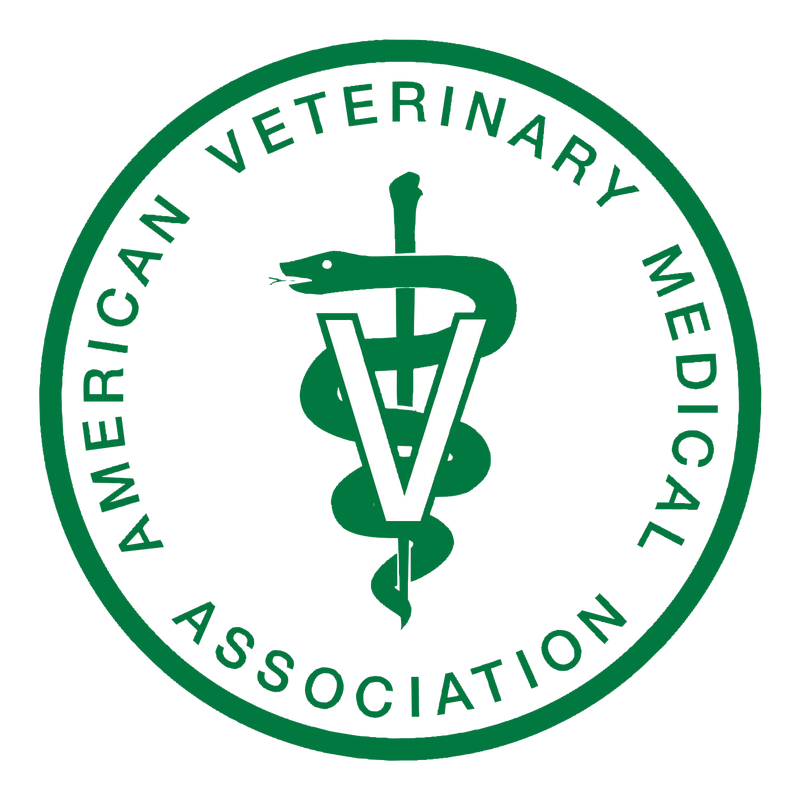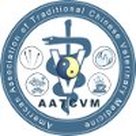Veterinary Acupuncture Questions & Answers
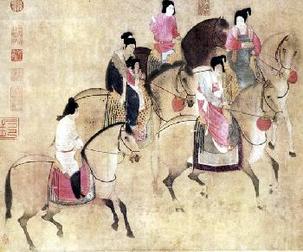
What is acupuncture?
Acupuncture is the stimulation, with a very fine, hairlike needle, of a specific point on the body with a specific method, to achieve a therapeutic effect. The specific point on the body is called “Shu-xu” or acupoint. The ancient Chinese discovered 361 acupoints in people and 173 acupoints in animals. The Chinese emperors prized their fine horses, who were treated with acupuncture. A text, Si Mu An Ji Ji, dating from the Tang Dynasty (618-907) contains illustrations defining 77 acupuncture points in horses.
Acupuncture points lie along lines called meridians. There are twelve Regular channels and eight Extraordinary channels. Modern research has found that acupoints lie in areas with a high density of free nerve endings, mast cells, small arterioles and lymphatic vessels. Most acupoints are motor points. The stimulation of acupoints causes the release of endorphins, serotonin and other neurotransmitters. Blood flow is stimulated, relieving stagnation. Together these events cause alleviation of pain and stimulate healing.
Acupuncture is the stimulation, with a very fine, hairlike needle, of a specific point on the body with a specific method, to achieve a therapeutic effect. The specific point on the body is called “Shu-xu” or acupoint. The ancient Chinese discovered 361 acupoints in people and 173 acupoints in animals. The Chinese emperors prized their fine horses, who were treated with acupuncture. A text, Si Mu An Ji Ji, dating from the Tang Dynasty (618-907) contains illustrations defining 77 acupuncture points in horses.
Acupuncture points lie along lines called meridians. There are twelve Regular channels and eight Extraordinary channels. Modern research has found that acupoints lie in areas with a high density of free nerve endings, mast cells, small arterioles and lymphatic vessels. Most acupoints are motor points. The stimulation of acupoints causes the release of endorphins, serotonin and other neurotransmitters. Blood flow is stimulated, relieving stagnation. Together these events cause alleviation of pain and stimulate healing.
|
What is Qi?
Qi is the life force or vital energy. There are many different types of Qi; for example, Qing Qi, sometimes called universal clean air, is the abundant energy of the universe made of air, light, electromagnetic forces and other substances. Jing Qi is the Qi one has at birth, which must be replenished as life progresses. Stagnation or blockage of Qi produces pain. The two opposite forms of Qi are Yin and Yang. Yin energy tends to be mostly darker, still, moving downward; while Yang energy is light, mobile, expanding upward. The goal of Chinese medicine is to restore or mantain balance in the body: this is health. |
|
How is acupuncture practiced?
Acupoints may be stimulated in a number of ways: by dry needling, electroacupuncture, moxibustion, aqu-acupuncture. Electroacupuncture is the application of a gentle current to the acupuncture points, and is very effective in stimulating endorphins. Moxibustion is the application of heat with a lit stick of ground mugwort, and is used to promote the flow of Qi and blood, thereby relieving stagnation and pain. Aqu-acupuncture is the instillation of a liquid, often liquid vitamin B12, to an acupuncture point, and is especially helpful in cases where an animal might not want to sit quietly for an acupuncture session. Used at a point behind the ears, An-shen, the effect is calming. |
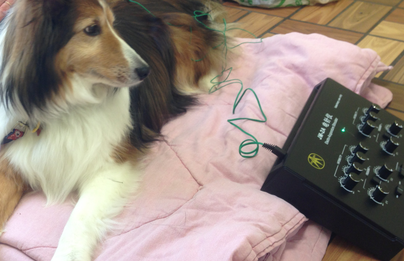 Tuey, a 13-year-old Sheltie, being treated with electroacupuncture.
Tuey, a 13-year-old Sheltie, being treated with electroacupuncture.
What physiological effects are induced by acupuncture?
Studies have shown that acupuncture induces the following effects:
- Pain relief
- Regulation of gastrointestinal motility
- Anti-inflammatory effects
- Immunoregulation
- Hormone and reproductive regulation
- Anti-febrile effect; microcirculation promotion
When is acupuncture indicated?
Clinical trials indicate that acupuncture therapy can be effective in treating the following conditions:
- Musculoskeletal problems: muscle soreness, back pain, disc problems, osteoarthritis, and degenerative joint disease
- Neurological disorders: seizures, laryngeal hemiplegia, facial and radial nerve paralysis
- Gastrointestinal disorders: diarrhea, gastric ulcers, colic, vomiting, constipation, impaction
- Other chronic conditions: anhidrosis(non sweating in horses), heaves, asthma, cough, uveitis, behavioural problems, Cushing’s disease, hypothyroidism, infertility, hyperthyroidism, renal failure, geriatric weakness, geriatric vestibular syndrome in the dog, certain dermatologic conditions, allergies
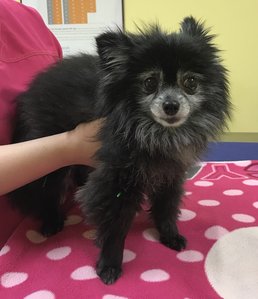 Ebby at her first acupuncture treatment.
Ebby at her first acupuncture treatment.
Is acupuncture safe?
In the hands of a well trained and qualified veterinary acupuncturist, who is a graduate of a veterinary college and is certified in acupuncture, acupuncture is safe. Very few side effects occur. Conditions exist in which acupuncture may be contraindicated, however, and some of those include:
What does a typical treatment protocol entail?
A treatment protocol will be determined after the veterinarian has reviewed the history of the case, examined the patient in both a Western and Eastern manner, and established a diagnosis. In most cases, three once a week treatments are recommended to begin, and then response is evaluated. In many chronic cases, including osteroarthritis in older dogs, monthly or every other month treatments are beneficial.
In the hands of a well trained and qualified veterinary acupuncturist, who is a graduate of a veterinary college and is certified in acupuncture, acupuncture is safe. Very few side effects occur. Conditions exist in which acupuncture may be contraindicated, however, and some of those include:
- Certain points in a pregnant animals
- In the area where a tumor exists
- Electroacupuncture for animals with a history of seizures
- Open wounds
- Infectious diseases
- Fractures (acupuncture is not recommended for fractures)
What does a typical treatment protocol entail?
A treatment protocol will be determined after the veterinarian has reviewed the history of the case, examined the patient in both a Western and Eastern manner, and established a diagnosis. In most cases, three once a week treatments are recommended to begin, and then response is evaluated. In many chronic cases, including osteroarthritis in older dogs, monthly or every other month treatments are beneficial.
|
Does acupuncture hurt?
Most patients find acupuncture treatments relaxing, and some, particularly those who have been in a lot of pain, will fall asleep. Very fine needles, almost as thin as hairs, are used, and some special needles for the limbs of cats, for example, are quite difficult to see! The effect of acupuncture has been described in many ways, including: a feeling of heaviness, trembling, floating, heat or coolness, a tingling sensation. In every situation, the patient is handled with utmost gentleness. |
How much does acupuncture cost?
Cost for acupuncture therapy varies by location, practitioner, species and disease. The first session, in which the doctor reviews all medical records, takes a detailed history, fully examines the animal, establishes a diagnosis, creates a treatment plan, and treats the patient, can last one to one and a half hours and costs more than the subsequent appointments which are typically less than an hour in length.
Who is qualified to perform veterinary acupuncture?
Only licensed veterinarians are eligible to practice acupuncture in most states, and it is highly recommended that they be certified in Veterinary Acupuncture, as well. Visit The Chi Institute to learn more about the education of a Certified Veterinary Acupuncturist.
Cost for acupuncture therapy varies by location, practitioner, species and disease. The first session, in which the doctor reviews all medical records, takes a detailed history, fully examines the animal, establishes a diagnosis, creates a treatment plan, and treats the patient, can last one to one and a half hours and costs more than the subsequent appointments which are typically less than an hour in length.
Who is qualified to perform veterinary acupuncture?
Only licensed veterinarians are eligible to practice acupuncture in most states, and it is highly recommended that they be certified in Veterinary Acupuncture, as well. Visit The Chi Institute to learn more about the education of a Certified Veterinary Acupuncturist.
What about chiropractic and massage?
The veterinarian may choose to use Tui-na , a form of Chinese manipulative therapy often used in conjunction with acupuncture and Chinese herbs. From a conventional medicine perspective, Tui-na can be thought of as corresponding to a combination of acupressure, conventional massage and chiropractic techniques.
Does Traditional Chinese Veterinary Medicine include any special foods?
Yes, TCVM practitioners may recommend special foods to use, based on Traditional Chinese Food Energetics, and each patient’s individual diagnosis. In Eastern medicine foods are described as having special qualities such as warming or cooling; and possessing certain flavours, such as salty, sour, bitter, sweet or pungent. If desired, your TCVM practitioner will work with you to design a special health enhancing diet for your pet.
